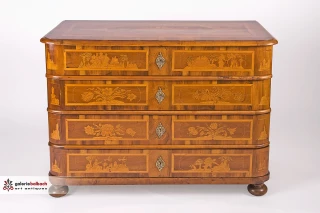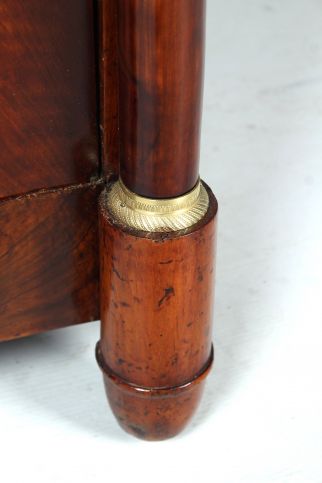Hotly loved patina
Antiques with patina
The question of the right degree of restoration, of preserving what is worth preserving, of conserving or eliminating signs of age and use, divides the antiques industry time and again.
Some like their finely restored pieces of furniture, which are in perfect condition and function perfectly, while others love the charm of the used and interpret traces of use as an important feature of antiquity and a sign of age and authenticity.
But who wants to presume to decide which patina condition is exactly the right one? Doesn't everyone have to decide that for themselves, according to their own and personal taste?
For the antiques trade, there is no generally binding definition of patina and the assessment of whether patina or decay is still present is absolutely subjective. The degree of patina worth preserving should be decided by the person who owns the piece of furniture, who lives with the piece of furniture or who trades in old pieces of furniture. As long as a piece of furniture is loved, as long as it is lived with and as long as it can be sold well, it has its right to exist. Whether it has a patina or not.
The original condition of an antique piece of furniture
 The truly original condition of a piece of antique furniture only existed at the time it left the workshop of its maker 100, 200 or even more years ago. And at that time it was certainly without patina.
The truly original condition of a piece of antique furniture only existed at the time it left the workshop of its maker 100, 200 or even more years ago. And at that time it was certainly without patina.
From then on, the patina began to grow. The furniture was used, drawers were opened and closed, doors were slammed, tabletops were wiped again and again. And this over decades. Over all these years, not only tensile, pressure and friction forces had an effect, but also temperature fluctuations, changes in humidity and sunlight. Leather surfaces and fire gilding wore off, veneers came loose and all wood moved with the rhythm of the seasons.
My personal opinion is that every scratch, every discolouration and every quirk tells its own story and is witness to beautiful and not so beautiful decades.
Signs of age and use shape the character of a piece of furniture and give it a certain charm. They always encourage us to think clearly about how old the piece of furniture is and what it has already experienced.
If the restorer has the choice, i.e. if it is technically possible to retain the patina and if the customer does not expressly request otherwise, then he should restore the piece of furniture while retaining the patina - even if this is often associated with more effort and thus also with higher costs.
Because the following applies in principle: the condition of a decades-old patina only exists once. Once the patina has been "restored", it remains "restored".
It must then be created from scratch, because a real patina cannot be achieved with any stain in the world - a real patina needs time. It must grow and flourish over decades and centuries.
Also interesting

Antiques - absolutely unique
Individual living - with an antique piece of furniture! This chest of drawers exists exactly once. The [...]Read more

The master craftsman's diploma
...craftsmanship has golden soil! Antique furniture is a piece of craftsmanship history! The age and [...]Read more

Shaped by life
What could be more beautiful than the old, original leather? A small water stain here, a quirk there, [...]Read more









